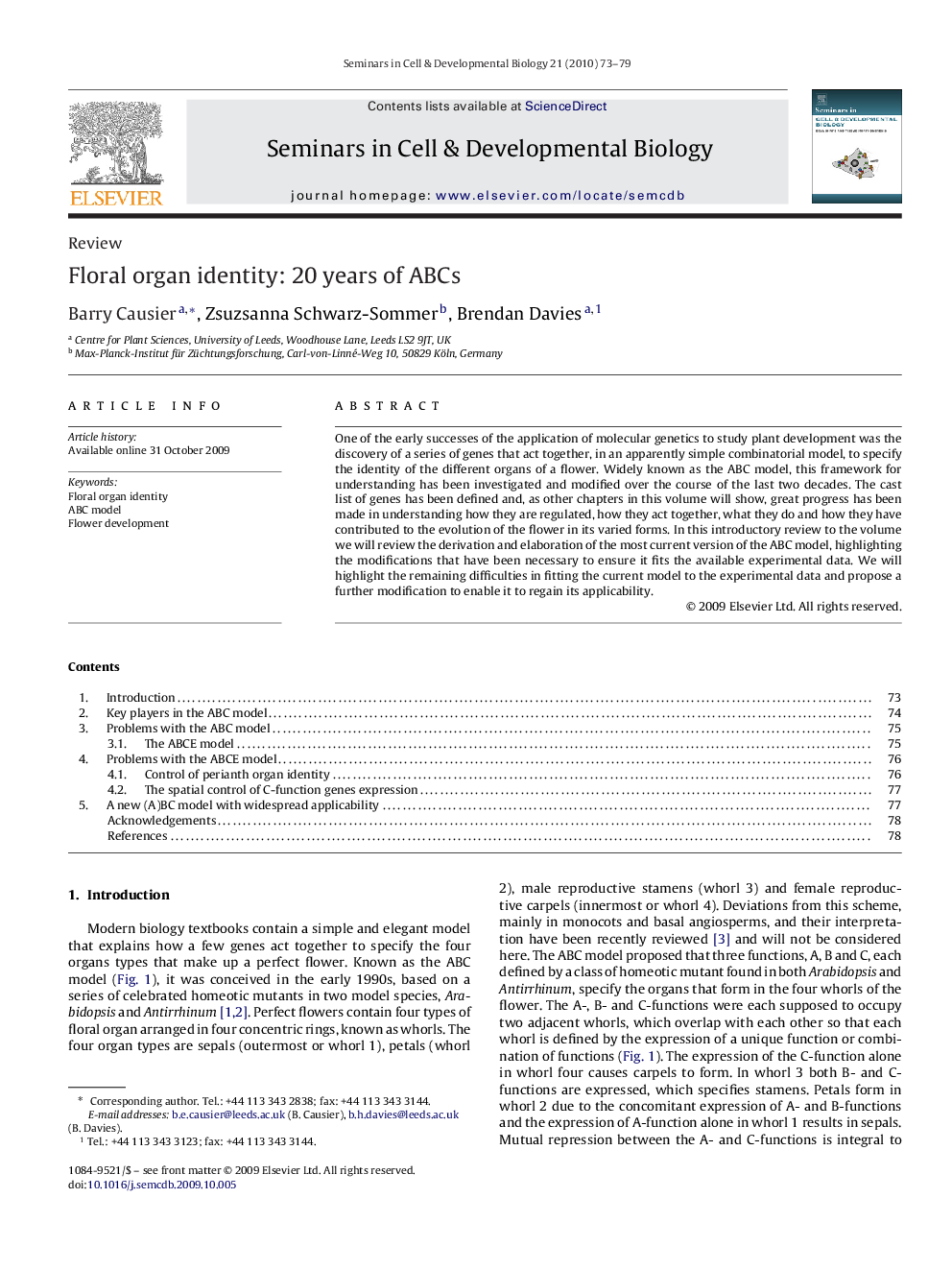| Article ID | Journal | Published Year | Pages | File Type |
|---|---|---|---|---|
| 10959268 | Seminars in Cell & Developmental Biology | 2010 | 7 Pages |
Abstract
One of the early successes of the application of molecular genetics to study plant development was the discovery of a series of genes that act together, in an apparently simple combinatorial model, to specify the identity of the different organs of a flower. Widely known as the ABC model, this framework for understanding has been investigated and modified over the course of the last two decades. The cast list of genes has been defined and, as other chapters in this volume will show, great progress has been made in understanding how they are regulated, how they act together, what they do and how they have contributed to the evolution of the flower in its varied forms. In this introductory review to the volume we will review the derivation and elaboration of the most current version of the ABC model, highlighting the modifications that have been necessary to ensure it fits the available experimental data. We will highlight the remaining difficulties in fitting the current model to the experimental data and propose a further modification to enable it to regain its applicability.
Keywords
Related Topics
Life Sciences
Biochemistry, Genetics and Molecular Biology
Cell Biology
Authors
Barry Causier, Zsuzsanna Schwarz-Sommer, Brendan Davies,
